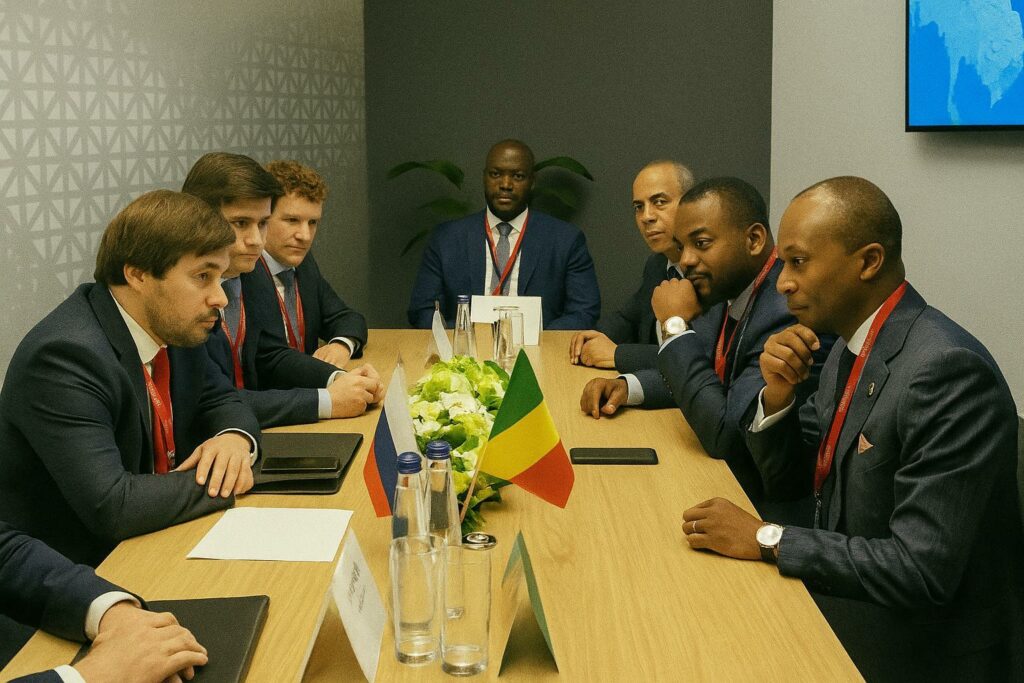An Atlantic Terminus Meets Eurasian Ambition
When Congolese minister Denis Christel Sassou Nguesso and Russian deputy energy minister Pavel Sorokin exchanged pleasantries on the fringes of the Saint Petersburg International Economic Forum on 19 June, they discreetly confirmed what had circulated in industry circles for months: the Pointe-Noire–Loutété–Maloukou-Tréchot crude pipeline is no longer a mere memorandum. According to a Russian Energy Ministry communiqué published the following day and corroborated by the Congolese National Petroleum Company, ground-breaking is scheduled for the final quarter of 2025, with a 25-year operational horizon. The project threads together two geographies that had rarely overlapped in hydrocarbons logistics, tracing roughly 1,200 kilometres from the Atlantic littoral to the northern outskirts of Brazzaville.
A Financing Mosaic Balancing Public Risk and Private Gain
The financial architecture remains deliberately opaque, yet officials close to the file concede that a special-purpose vehicle controlled at 60 percent by a consortium of mid-tier Russian engineering firms will shoulder construction costs estimated at 4.8 billion USD (African Energy Chamber figures, March 2025). Brazzaville’s exposure is capped through tax incentives and a throughput-guarantee clause under which the Société nationale du pétrole du Congo commits to minimum flows of 90,000 barrels per day during the first decade. Russian lenders reportedly include Gazprombank and the Eurasian Development Bank, while Congolese pension funds may subscribe to subordinated debt tranches, blending sovereign and commercial logic in a manner reminiscent of China’s earlier African infrastructure forays.
Engineering the Trench: Technical Unknowns and Ecological Scrutiny
Engineering blueprints obtained by the French trade weekly Pétrole & Gaz Afrique describe a buried 28-inch line crossing three ecologically sensitive corridors, notably the coastal mangroves near Kouilou and sections of the Lefini reserve. Russian contractor Zarubezhneft insists on “international best practice” in leak detection and a fibre-optic surveillance grid, yet Congolese civil society groups such as Observatoire congolais des droits de l’environnement warn that the environmental impact assessment circulated in April remains a draft lacking public consultation. The Ministry of Hydrocarbons retorts that final approval will hinge on compliance with standards of the International Finance Corporation, signalling an attempt to pre-empt accusations of regulatory leniency.
From Mining Classrooms to Pipeline Control Rooms
Beyond steel and valves, the partnership tries to weave an educational dimension. During his Saint Petersburg stay, Minister Sassou Nguesso toured the venerable Mining Institute founded in 1773, securing, in his words, “a corridor of knowledge transfer” between the Russian school and the newly created Denis-Sassou-Nguesso University (Congolese Ministry of Higher Education statement, 21 June). Up to fifty Congolese engineers are expected to receive bilingual training each year in reservoir management, pipeline integrity and geological modelling, partially funded by the pipeline operator’s local content obligations. The initiative echoes Russia’s Cold-War tradition of offering technical scholarships to African elites, yet stakes are higher now as Brazzaville seeks to anchor industrial diversification to indigenous skill sets.
Regional Ripples and the Subtext of Great-Power Competition
For Moscow, the venture dovetails with a broader African energy push that already includes refinery upgrades in Sudan and product-swap deals with Mali. Analysts at the Moscow-based Skoltech Energy Centre note that a Congolese export corridor gives Russian firms a non-OPEC African foothold at a time when European sanctions narrow traditional markets. Conversely, President Denis Sassou Nguesso senior can brandish the project as evidence of multipolar leverage, balancing long-standing French influence and emergent Chinese financing. Neighbouring states follow developments closely: land-locked Central African Republic eyes potential off-take agreements, while Angola, itself an OPEC heavyweight, quietly questions whether the new line will intensify competition for Atlantic tanker slots. The African Union’s Infrastructure Development Agency has so far offered muted comments, signalling both the promise and the delicacy of inserting an external power into Central African energy arteries.
Between Timetables and Realities, a Test of Credibility
Congo’s hydrocarbon history is littered with shelved mega-projects, from the lead-acid Batanga refinery plan of the 1990s to the ill-fated Iron Ridge LNG concept abandoned in 2015. The Pointe-Noire pipeline therefore becomes a litmus test for Brazzaville’s commitment to project governance and for Moscow’s capability to deliver outside its Eurasian comfort zone. Both capitals have instituted a quarterly monitoring committee chaired jointly by their energy ministries, an unusual level of transparency that insiders interpret as a bid to reassure export-credit insurers. Whether engineering crews will indeed break ground in late 2025 hinges on final investment decision signatures expected by February, after Congolese parliamentary ratification. Until then, diplomats in both cities will continue to tout the scheme as a symbol of “strategic patience”, even as commodity markets, environmental activists and regional rivals keep a watchful eye on the red-lined map stretching from Pointe-Noire to the forests of Maloukou-Tréchot.

